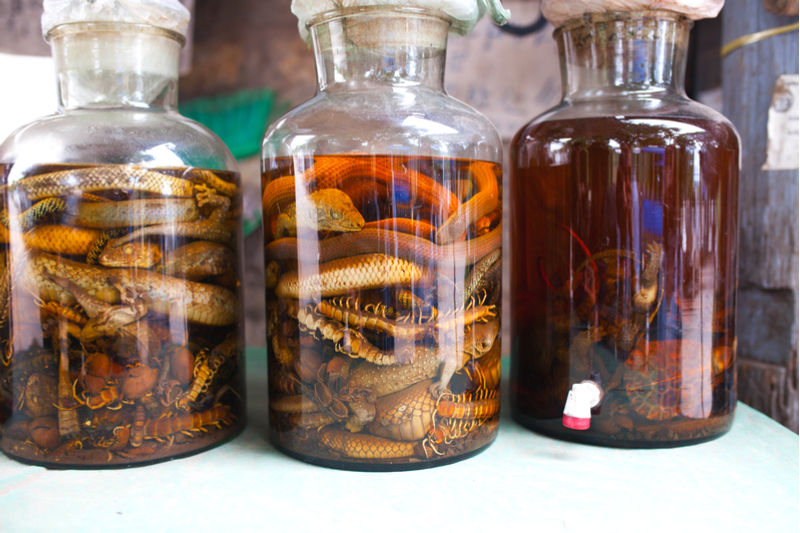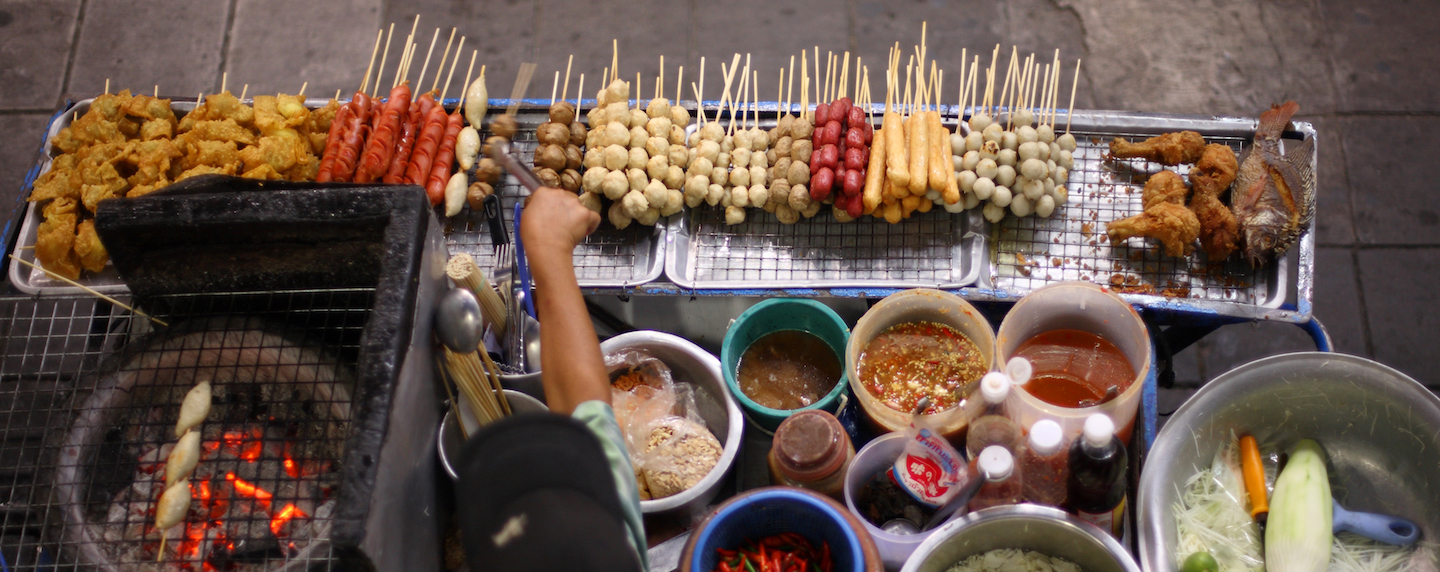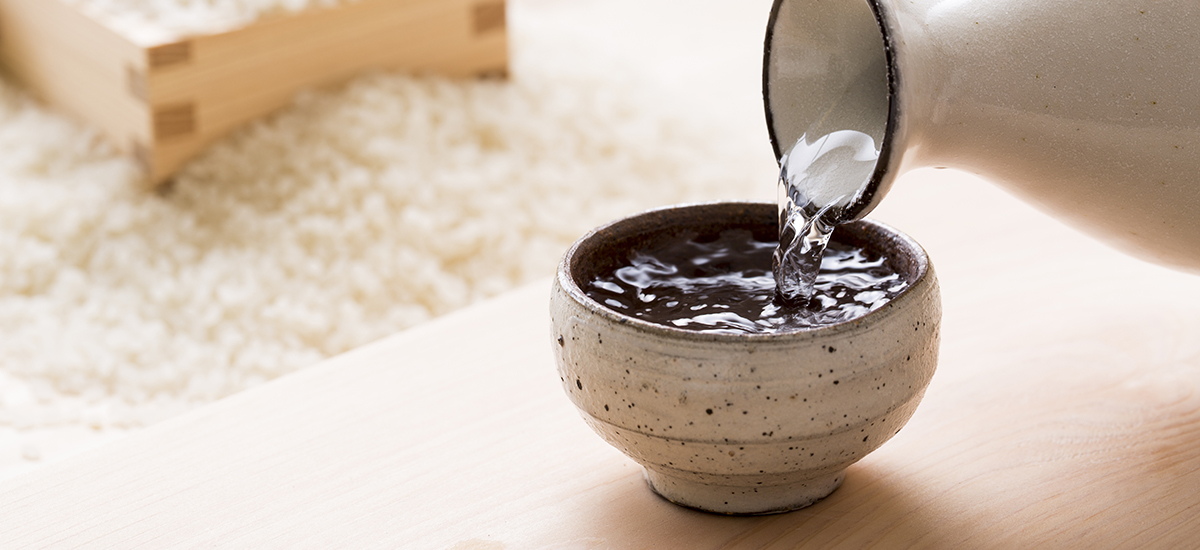When it comes to adventures, one can have many interpretations of what exotic is. For some, it may the adrenalin rush of a roller coaster, the rushing waters of a river rafting session or even the breathtaking sight of endless mountain ranges. On the flip side, there are those who like to stretch the limits of their palate and sample some of the oddest delicacies the world has to offer. If you’re one of these gutsy gourmands, we have eight peculiar offerings to pique your appetite!
Eat balut in the Philippines

Try Balut in the PhilippinesCheap hotels in Manila*
Drink fruit bat soup in Indonesia

Incorporating a myriad of spices and cooking techniques, Indonesian cuisine is easy to fall in love with. Lesser-known protein like bats, however, may not be the first thing most travellers would seek out when dinner time comes around. However, if you’re ever on a visit to North Sulawesi, that’s exactly what you’d find when tasting the local Minahasa speciality, Paniki – fruit bat soup. According to the 1999 version of The Oxford Companion to Food, the flavour of fruit bats is similar to that of chicken. No vampires, fruit bats are clean animals who live exclusively on fruit. Although bat meat has a low fat content and is high in protein, it may emit a potent odour of ammonia (usually found in urine). Not to worry, though. Those Indonesian spices are more than capable of getting rid of a little bat smell. A generous addition of garlic, onion, chilli pepper or even beer is added to the cooking process to neutralise the odour.
Slurp fruit bat soup in IndonesiaCheap hotels in Jakarta*
Eat Sannakji (live octopus) in Korea
You might’ve come across viral videos of diners poking their chopsticks at a plate of what seems to be live octopus, right before consuming the still-wriggling mass of tentacles. This rightfully intimidating raw dish is quite a spectacle to witness, let alone taste. In fact, the octopuses are not live – they are killed and cut into smaller pieces before serving, but due to the presence of still-active nerves in their tentacles, these sea creatures look like they’re not going down without a fight before meal time. They are eaten simply – only with a drizzle of sesame oil – and have been known to come with a fair warning ensuring that diners chew each mouthful thoroughly before swallowing.
Wriggle with an octopus in SeoulCheap hotels in Seoul*
Drink snake or scorpion wine in Vietnam

In Japan, you have sake. In Korea, there’s Shochu. As for Vietnam, they have Ruou thuoc (meaning ‘medicine wine’), which is made with the infusion of the remains of wildlife, particularly snakes and scorpions. Its history dates back to China, during the Western Zhou dynasty, when it was regarded as an elixir to restore and reinvigorate a person’s well-being. The wines are made with raw herbs like ginseng, which, together with the animal, are kept in a large earthenware jar of alcohol. Usually, a distilled liquor of at least 45% alcohol content is used, and the bottle is left for several days or up to several months, allowing plenty of time to neutralise the animal’s venom. Local lore views snake and scorpion wines as natural medicines, and they are often prescribed to treat conditions such as back pain, rheumatism and lumbago, as well as as aphrodisiacs.
Let snake wine slither down your throat in VietnamCheap hotels in Vietnam
Eat stinky tofu in China

When you think of tofu, you immediately think of its bouncy and silky texture. But what if those associations were altered to that of stench and stink? Much like durian, stinky tofu is a delicacy you’ll either love or hate completely. The popular street-side snack is known to assault the nose but please the palate. Its origins have mixed stories, with one telling of a man named Wang Zhi-He, from the Qing Dynasty, who first invented the dish. After failing the imperial exam, Wang Zhi-He stayed in Beijing and relied on selling tofu to make a living. One unfortunate day, he had a huge quantity of unsold tofu and so he cut the tofu into small cubes and put them into an earthen jar. After several days, he opened up the jar and found that the tofu had turned greenish and extremely foul-smelling. He tasted the vile-looking creation and found it surprisingly delicious. It was then that he decided to sell it. Today, you can find stinky tofu prepared a few ways – stewed, braised or deep-fried – and garnished with pickled cabbage, bamboo shoots, century eggs or congealed duck blood.
Follow the scent to Kun MingCheap hotels in Kun Ming,*
Eat tarantula in Cambodia

Originally born out of a desperate need for sustenance, spiders have become a favourite snack among the Cambodians, and are often served at special occasions. The history of spider consumption started when the Khmer Rouge’s rule forced Phnom Penh’s 2.5 million residents out from their homes into the surrounding hillsides and fields. The local Thai Zebra tarantulas (called ‘a-ping’) soon became a means of survival. These days, the treats are often rolled in sugar or garlic, and have been described as tasting like a cross between chicken and cod. With the least flesh found in its legs, in contrast, the abdomen is where you’ll find everything, from the heart to the eggs and even excrement.
Crawl to Phnom PenhCheap hotels in Phnom Penh*
Eat a tuna eyeball in Japan

Japan is world-famous for serving some of the best fish dishes known to man, with sashimi and sushi having become international favourites. On the other hand, they also have a few local delicacies that have yet to catch on in the wider world. Enter, the tuna eye. Tuna is a prized fish in Japan, with no part going to waste. To that end, Japanese chefs prepare tuna eyeballs in several ways. One method is to serve them as-is (raw), while some diners may prefer to have theirs steamed, boiled or deep-fried. And the best news is, this ‘eyecatching’ speciality is far from a guilty pleasure. A few years ago, the Japan Health Association recognised tuna eyes amongst their list of healthy dishes, due to their high level of proteins and fatty acids. Many locals who are unable to afford to buy tuna meat regularly find the cheaper eyeballs a great alternative, notably from the famous Tsukiji Fish Market.
Lock eyes with a tuna in TokyoCheap hotels in Tokyo*
Eat weaver ants in Thailand

Travel up north in Thailand, and you’ll be greeted by stalls selling weaver ant eggs. Snack vendors commonly sell these snacks wrapped in banana leaves, while restaurants may serve them in a salad, stir-fried or in a variety of soups. The ants got their name from the unique way they build their nests, the worker ants weaving together leaves using larval silk. Don’t be fooled into thinking that since they’re mere insects they’ll come cheap, though: in North-eastern Thailand, weaver ant larvae go for twice the price of good quality beef. These critters aren’t only a highly-priced delicacy, but they are also used as a biological control agent to increase plant production. High in protein and fatty acids, it’s little wonder that weaver ants are seen as a viable alternative source of food for the future. And how do they taste? Well, they are known to taste rich and buttery, yet somewhat sweet. Thanks to a diet of fruit-tree leaves, matured ants have a fresh citrusy taste. They can also replace lemon juice or vinegar in recipes because of their natural acidity.
Crawl to Chiang MaiCheap hotels in Chiang Mai, from $9*
Note: These rates are based on search queries made on nz.KAYAK.com on 17 October, 2017. The prices are quoted in NZD. Flight prices are based on results for a return economy flight search. Hotel prices are for double occupancy and include taxes and fees. Prices are subject to change, may vary, or no longer be available.






